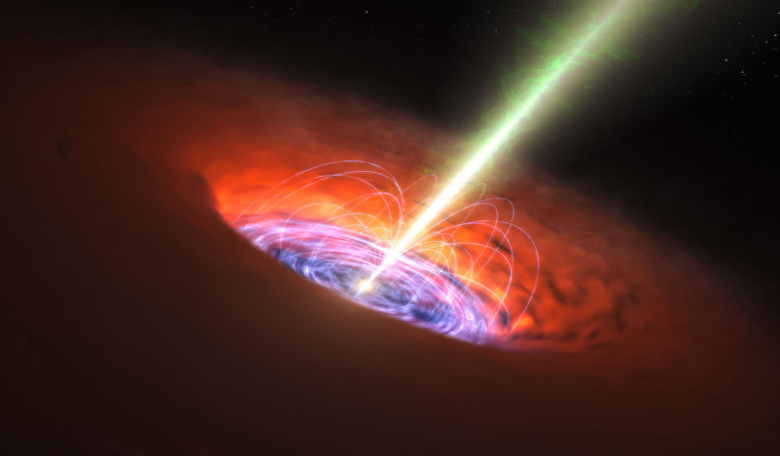When astronomers made the first observation of a binary black hole merger in February 2016, it was not just gravitational waves that were caught rippling through Earth; a wave of feverish excitement reserved for only the most spectacular of discoveries also surged around the globe. Since then, and including that initial discovery, a total of 10 binary black mergers have been unveiled along with a merger between two neutron stars.
But what could better the discovery of two black holes merging? Three black holes? Now new research by a team of US and Chinese researchers have helped pinpoint just that - a trio of highly luminous, massive black holes, that are on a collision course with one another.
Black holes are believed to be ubiquitous throughout the Universe; most local galaxies, if not all, are believed to harbour one at their centre. Mergers between two black holes are therefore not expected to be a rare event. However when it comes to three black holes coalescing together, only three systems are known about and their identification based on the visible light they emit has been questioned by some.
One of the three systems in question is a trio of AGN that are collectively known as SDSS J0849+1114. AGN is short for Active Galactic Nuclei and they are thought to be powered by centrally located supermassive black holes.
Not all black holes are monstrous feeding machines. Some, like the one at the centre of our galaxy, are relatively quiet and munch lazily on the surrounding material that circles the black hole. Others however devour material in a feeding frenzy causing the gas to get heated up via gravitational and frictional forces. This rapid accretion causes light to be emitted as high-energy radiation such as gamma-rays and x-rays, and the output can be so bright it makes the AGN shine brighter than the rest of the stars in the galaxy put together.
The three AGN within SDSS J0849+1114 are no different. All have extremely bright nuclei and each spans at least a thousand parsecs (one parsec is a unit of distance that’s equivalent to 3.26 light years).
SDSS J0849+1114 has been observed before, but comprehensive new observations with the Hubble Space telescope, Chandra X-ray, and the Very Large Array (VLA) located in central New Mexico, by a team whose lead author is Xin Liu at the University of Illinois, US, have helped determine exactly what type of AGN make up the trio; all are type-2 Seyfert galaxies, making SDSS J0849+1114 the only known system to contain triple type-2 Seyfert nuclei.
Seyfert’s are a particular type of AGN – one of earliest distinct class of AGN to be recognised – and type-2’s are identified by narrow emission lines that are emitted from atoms or molecules within the gas being consumed – a feature that implies the gas is travelling at velocities of around 500-1000 kilometres per second.
Aside from their rarity, triple merger systems are also expected to be unique gravitational wave sources, the likes of which have yet to be captured by detectors such as the Laser Interferometer Gravitational-Wave Observatory (LIGO) and a signal that is unlikely to come from SDSS J0849+1114 any time soon.
Observations of the individual nuclei within SDSS J0849+1114 indicate that all lie within a few kiloparsecs of each other, so while they are not yet on the cusp of merging together, they may evolve into a smaller bound, more compact triple system in approximately 2 billion years or less, say the authors of the report.
But if they do finally intermix, what is the expected outcome? No one really knows for sure. They may all merge together to create one super enormous supermassive black hole, or two might join together and kick the third one out. Two is company after all.
One way to find out will be to conduct more galaxy surveys looking further back in time, where mergers are thought to be more frequent.
More information on this research can be found here.











